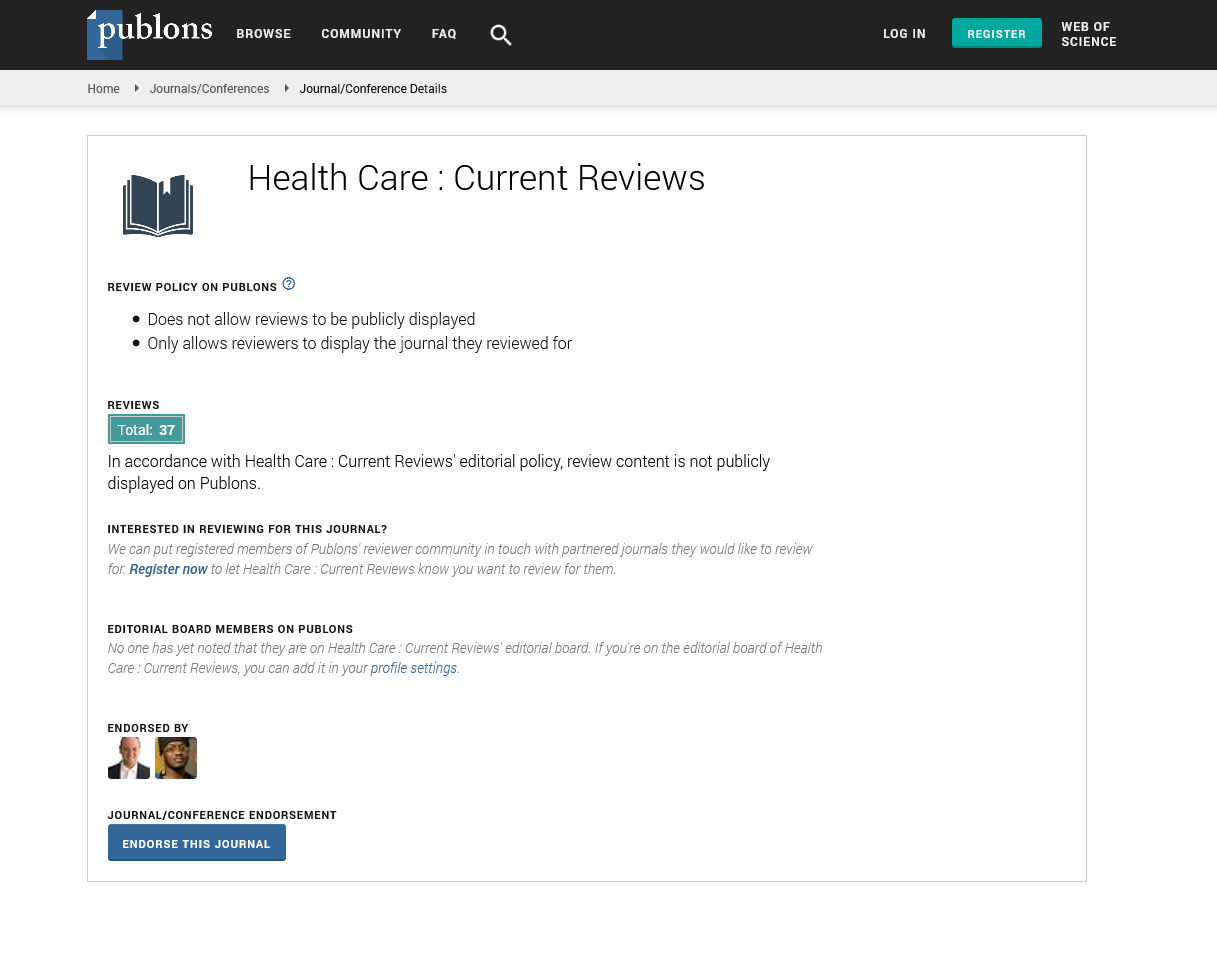Indexed In
- Open J Gate
- Academic Keys
- RefSeek
- Hamdard University
- EBSCO A-Z
- Publons
- Geneva Foundation for Medical Education and Research
- Google Scholar
Useful Links
Share This Page
Journal Flyer

Open Access Journals
- Agri and Aquaculture
- Biochemistry
- Bioinformatics & Systems Biology
- Business & Management
- Chemistry
- Clinical Sciences
- Engineering
- Food & Nutrition
- General Science
- Genetics & Molecular Biology
- Immunology & Microbiology
- Medical Sciences
- Neuroscience & Psychology
- Nursing & Health Care
- Pharmaceutical Sciences
Perspective - (2024) Volume 12, Issue 2
The Role of Obesity in Acute Ischemic Stroke: Exploration of Risks and Treatments
Annett Mitchell*Received: 01-May-2024, Manuscript No. HCCR-24-25802; Editor assigned: 03-May-2024, Pre QC No. HCCR-24-25802 (PQ); Reviewed: 17-May-2024, QC No. HCCR-24-25802; Revised: 24-May-2024, Manuscript No. HCCR-24-25802 (R); Published: 31-May-2024, DOI: 10.35248/2375-4273.24.12.405
Description
Acute Ischemic Stroke (AIS) is a medical emergency characterized by the sudden loss of blood circulation to an area of the brain, resulting in a corresponding loss of neurological function. One of the critical risk factors for AIS is obesity, a prevalent condition that exacerbates stroke risk and complicates its management.
Obesity and acute ischemic stroke
Obesity is defined by an excessive accumulation of body fat, typically measured by Body Mass Index (BMI). A BMI of 30 or higher classifies an individual as obese. The correlation between obesity and AIS is well-established, with multiple studies indicating that obesity significantly increases the risk of stroke. The mechanisms underlying this relationship are multifaceted, involving metabolic, vascular, and inflammatory pathways.
Firstly, obesity is a major contributor to atherosclerosis, the build-up of fatty deposits in the arteries. This condition leads to narrowing and hardening of the arteries, impairing blood flow to the brain and increasing the risk of thrombotic events. Additionally, obesity is closely linked to hypertension, diabetes mellitus, and dyslipidemia, all of which are independent risk factors for AIS. Elevated blood pressure in obese individuals contributes to endothelial dysfunction and vascular damage, while insulin resistance and elevated blood glucose levels exacerbate the risk of clot formation.
Inflammation plays a potential role in the pathophysiology of AIS in obese patients. Adipose tissue, particularly visceral fat, secretes pro-inflammatory cytokines such as Interleukin-6 (IL-6) and Tumor Necrosis Factor-alpha (TNF-alpha). These cytokines promote a pro-thrombotic state by increasing platelet aggregation and impairing fibrinolysis, thus heightening the likelihood of clot formation and subsequent stroke.
Clinical challenges in managing AIS in obese patients
The management of AIS in obese patients presents unique challenges that can affect treatment outcomes. One of the primary concerns is the accurate diagnosis and timely intervention. Imaging studies, such as Computed Tomography (CT) and Magnetic Resonance Imaging (MRI), may be technically challenging in severely obese patients due to limitations in scanner weight capacity and patient positioning. These challenges can lead to delays in diagnosis, which is critical in stroke management where "time is brain."
Furthermore, the pharmacokinetics of thrombolytic therapy, such as tissue Plasminogen Activator (tPA), can be altered in obese patients. Dosage adjustments based on body weight are necessary, but there is limited data on the optimal dosing strategies for this population. Obesity also increases the risk of complications such as hemorrhage following thrombolytic therapy, necessitating careful monitoring and risk assessment.
Obese patients are also more likely to have comorbid conditions such as Obstructive Sleep Apnea (OSA), which can complicate post-stroke management. OSA is associated with recurrent hypoxia and elevated sympathetic activity, which can exacerbate brain injury and inhibit recovery. Additionally, the presence of obesity-related cardiovascular conditions, such as heart failure and atrial fibrillation, further complicates the clinical management of AIS.
Strategies for effective management
Addressing AIS in obese patients requires a comprehensive, multidisciplinary approach. Early intervention is predominant, emphasizing the importance of rapid recognition and response. Emergency medical services should be equipped with protocols to control the obese patients, including appropriate transport and imaging facilities.
In terms of pharmacological management, clinicians must be vigilant in adjusting thrombolytic dosages and monitoring for potential complications. Given the altered pharmacodynamics in obese patients, alternative strategies such as endovascular thrombectomy might be considered, especially in cases where thrombolysis is contraindicated or has failed.
Long-term management focuses on secondary prevention, which includes aggressive risk factor modification. Weight loss through dietary changes, physical activity, and behavioral interventions is essential. Bariatric surgery might be an option for eligible patients, demonstrating benefits in reducing cardiovascular risks and improving metabolic profiles. Managing comorbidities like hypertension, diabetes, and dyslipidemia through pharmacotherapy and lifestyle interventions is equally critical.
Regular follow-up and rehabilitation are vital components of post-stroke care in obese patients. Altered rehabilitation programs that consider the physical limitations and specific needs of obese individuals can enhance recovery and reduce the likelihood of recurrent strokes. Multidisciplinary teams, including neurologists, dietitians, physiotherapists, and psychologists, play a potential role in delivering comprehensive care.
Obesity significantly influences the risk, presentation, and management of acute ischemic stroke. The integrated pathophysiological mechanisms involving metabolic, vascular, and inflammatory pathways highlight the need for targeted interventions. Overcoming the clinical challenges requires a coordinated approach that prioritizes timely diagnosis, appropriate therapeutic strategies, and long-term risk factor management. As obesity rates continue to rise globally, addressing this public health challenge is imperative to control the difficulty of acute ischemic stroke and improve patient outcomes.
Citation: Mitchell A (2024) The Role of Obesity in Acute Ischemic Stroke: Exploration of Risks and Treatments. Health Care Curr Rev. 12:405.
Copyright: © 2024 Mitchell A. This is an open access article distributed under the terms of the Creative Commons Attribution License, which permits unrestricted use, distribution, and reproduction in any medium, provided the original author and source are credited.

